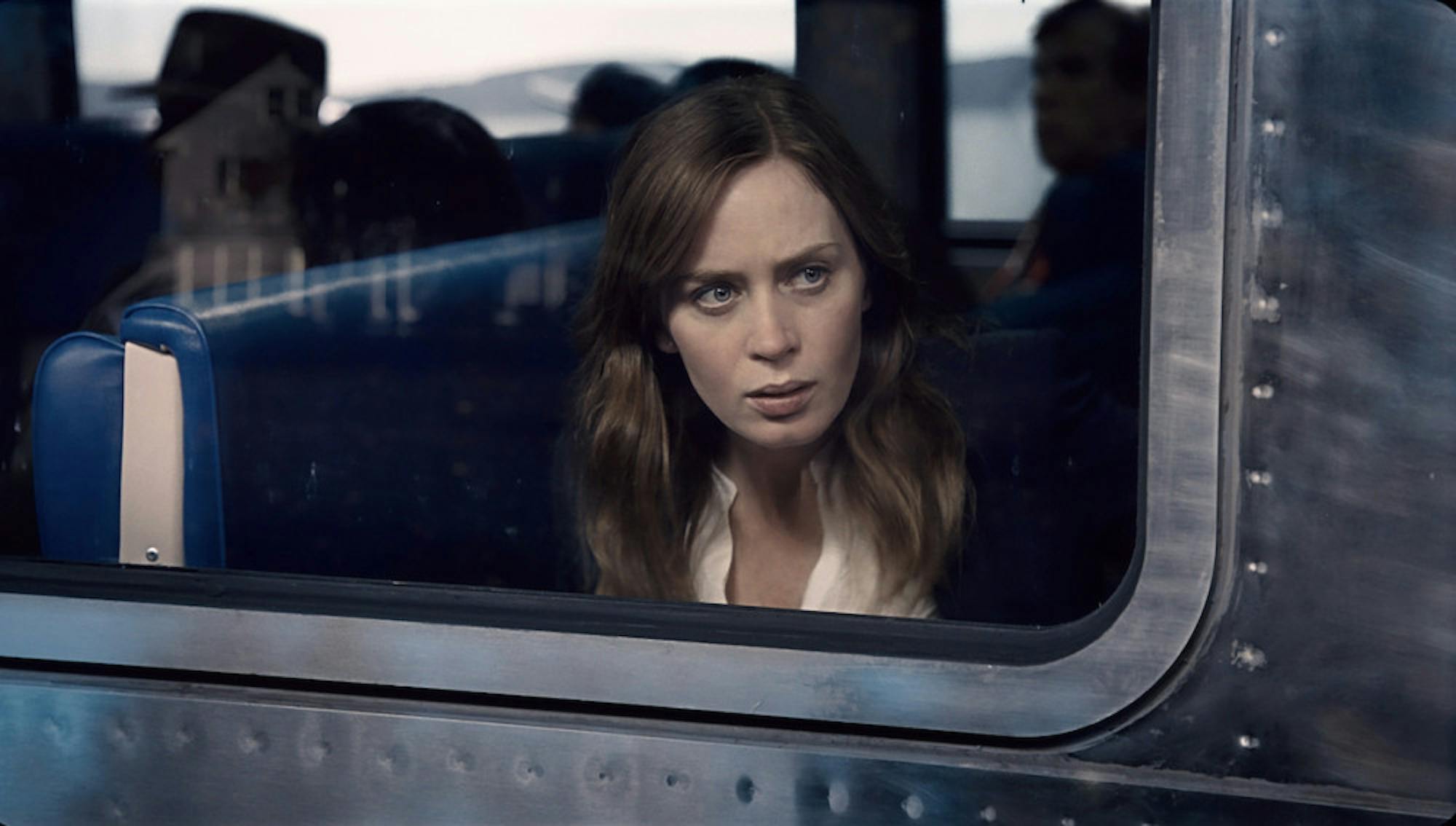There are many parallels between “The Girl on the Train,” released on Oct. 7, and “Gone Girl” (2014), but director Tate Taylor’s new film doesn’t weather the comparison well. The titular girl is Rachel Watson (Emily Blunt), an alcoholic woman who travels to and from New York City every day on a commuter train.From the vantage point of her favorite seat, she watches the residents of two very specific houses. One of the houses is one she knows she shouldn’t be watching: it’s where her ex-husband Tom (Justin Theroux) lives with his wife Anna (Rebecca Ferguson) and their infant daughter.The other is the home of Scott and Megan Hipwell, whom Watson has never met, but believes are the perfect couple. Her vision of their lives, idealized through the lens of her past and the booze, doesn’t match up with reality, and the impossibly intertwined transgressions of all involved soon make that abundantly clear.
“The Girl on the Train” makes a number of mistakes that keep it from fostering the suspense and morbid fascination that director David Fincher and writer (and author of the original book) Gillian Flynn used to such effect in “Gone Girl.” The true villain of “The Girl on the Train” is only revealed in the final act, and the bulk of the running time is spent following Watson as she tries to piece together the events of one crucial night from her drunken haze.
Blunt makes Watson's anger and the pitiful feebleness that her character's drinking creates palpable, but her performance can’t overcome the muddled proceedings. Unlike in “Gone Girl,” where the plot was driven by the need for Ben Affleck’s character to clear his name, such a clear motivator is never established in “The Girl on the Train.” The film is billed as a mystery/thriller, but the “thriller” moniker should really be replaced with “(melo)drama.” The moments where the audience collectively lets out a breath, the thrills themselves, are missing in action. Instead, much of the focus is on the emotions and relationships of the five central characters: Watson and the two couples she watches from the train.
Writer Erin Cressida Wilson, best known for the BDSM romcom “Secretary” (2002), works off of Paula Hawkins’ bestselling novel but isn’t able to generate the requisite tension, and Taylor doesn’t add much in that department. He doesn’t seem at home in the big city or in the wealthy white suburb where most of the story takes place. Parts of the film are shot using a handheld camera, the swaying and bobbing frame in close-up hoping to evoke Watson’s inebriation and the uncertainty of what exactly happened, of who is telling the truth and who is hiding a dark secret.
But this style has the effect of compressing the lust, rage and betrayal on display, confining them to this little hamlet and draining the film of any relatability or universality. This might work if the audience had sympathy for anyone but Watson, and the connection to her is largely the work of Blunt herself and not the film as a whole. Instead, the only thing pulling the audience in is finding out what happened, and that draw is a weak tug at best here. That Watson is never in real physical or legal danger until the film’s climax makes following her retrace her steps tedious.
Further sapping the immersion are a number of elements that are distractingly artificial, breaking the admittedly weak spell the film casts over the viewer. One scene in the woods surrounding the suburb has the characters consumed by a very dense fog that was so placed that its break from reality is obvious. Throughout the film, Blunt’s hair and makeup seem not to be have been applied by a lush, but by someone told to apply makeup like a drunk would. And a moment when Watson supposedly takes a swig of liquor from a clearly empty bottle snaps any effect that the spell might have had.
Wilson and Taylor seem to have taken this film in the wrong direction, honing in on the relationship drama instead of the mystery and intrigue, and leaving other themes unexplored. In the film’s opening scene, we are introduced to Watson’s fantasy about the Hipwells and their perfect lives, but the mismatch between her perception and reality is never examined. That question of how and why we idealize others is an interesting one, and certainly one with deep connections to this story, but it’s left by the wayside. What the writer and director tried to achieve wasn’t so much a misstep in filmmaking, but the wrong track to take this story down.
'The Girl on the Train' takes the wrong track

Summary
2 Stars





